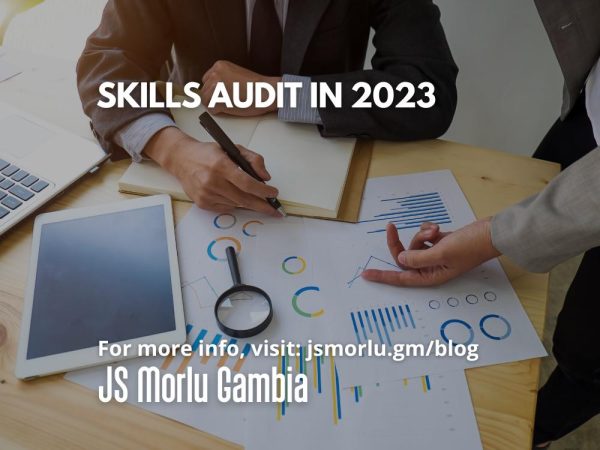
This is great that we have very quickly come to another weekend. Can you believe we are now in August however? We love to rush into each weekend but for many the year whizzing past is not the best.
The honest truth though is that a lot has transpired so far this year. I hope you are keeping tabs on your goals for this year, personal, spiritual and organisational. Business right now cannot be business as usual. There needs to be dexterity in managing many things, most importantly as far as I am concerned the workforce.
Today we are going to be looking at finding out what skills our people have which will help us with our manpower planning. Once manpower planning is in place we’re on the way to winning.
A skills audit is a process in which an organization assesses and evaluates the skills, knowledge, qualifications, and competencies of its workforce. It helps the organization identify the existing skills within the workforce, determine any skill gaps or shortages, and plan for future talent development and recruitment needs.
Some of the ways to achieve an effective audit, include but not limited to the following.
We should start off, like with everything by defining the objectives. Clarify the objectives and scope of the skills audit. Determine which skills and competencies are critical for the organization’s success and align the audit with strategic goals. In other words if it is not important for the role and the bottom line, we don’t need to expend time and energy measuring it.
We must identify Key Skills and competencies required for various roles within the organization very quickly. This can be done through job descriptions, competency frameworks, and input from managers and subject matter experts.
We must determine the best assessment method for evaluating employee skills. Methods can include checklists, control lists, surveys and questionnaires, interviews, self-assessments, technical assessments, cause and effect diagrams, performance reviews, the five why method and other tools.
Collect data from employees using the chosen assessment method. Ensure that the process is confidential and that employees feel comfortable providing honest and accurate information.
Analyse the data collected to identify skills strengths and weaknesses across the organization. Look for common patterns and trends, as well as areas where specific skills are lacking.
Compare the existing skills with the skills required for the organization’s current and future needs. Identify skill gaps, areas where additional training or development is needed, and potential succession planning requirements.
Based on the findings of the skills audit, HRM should develop action plans to address skill gaps and talent development needs. This may include implementing training programs, providing coaching or mentoring, and considering recruitment strategies.
Design and implement training and development initiatives to address identified skill gaps. Ensure that the training programs are aligned with the organization’s goals and offer opportunities for employees to acquire new skills and knowledge.
Based on the skills audit results, HRM can identify potential successors for critical roles within the organization. Implement succession planning to ensure a smooth transition when key employees leave or move to new positions.
Continuously monitor and evaluate the effectiveness of the skills audit and the action plans. Regularly update the skills audit to reflect changes in the workforce and the organization’s needs.
Communicate the results of the skills audit to relevant stakeholders, including senior management, department heads, and employees. There is no point doing the audit and not sharing the information, Many organisations do the work and put it in a drawer almost immediately after. Sharing the findings fosters transparency and helps employees understand the importance of skills development.
A well-executed skills audit provides HRM and the organization with valuable insights into the workforce’s capabilities, identifies areas for improvement, and enables proactive talent management strategies. It contributes to a more agile and capable workforce, better aligned with the organization’s goals and prepared to meet future challenges.
I really hope this has been useful. When you read these articles I hope you go and check the aspects discussed and get up to speed with the situation in your own organisation.
Have a great month of August.
Original Source: Business Day
